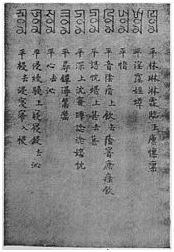Is it difficult to learn Indonesian?
Bahasa Indonesia literally means the language (bahasa) of Indonesia. Indonesia is one of the developing countries with significant economic growth. This makes the country attracts a lot of investors from all over the world to come and to set up businesses. However, some of them find it hard to communicate with the locals and hence need to learn the language.
Is it difficult to learn Indonesian?
Well, there are a few reasons why Bahasa Indonesia is not difficult to learn:
1. The language use Roman alphabet (a, b, c, ….), unlike Korean, Japanese, Mandarin, Arabic which require us to memorize different form of words and symbols.
2. Some of Indonesian vocabularies are derived from Sanskrit, Dutch, English, Portuguese and even Mandarin so you might find it familiar to you.
3. Bahasa Indonesia is not a tonal language like Mandarin or Vietnamese.
4. There is no tenses in Bahasa Indonesia.
So, why not try to learn Indonesian? I am sure you will not find it too hard!
— Tirto
Part A Reading: From impossibly hard to naturally easy


Do you find the Part A OET reading task too hard? You probably don’t have a good system for approaching the test.
This task can seem impossible. You have 15 minutes to read four texts and then answer more than 20 questions. And you have to get the grammar correct too!
I once had a student who had below than average spoken English, and she had a lot of trouble with the writing task too. However, unlike the rest of the class, she found Part A to be naturally easy. Even though English was her second language, she could finish any Part A task I threw at her with minutes to spare. Why was she so good at it?
This was because she had a systematic approach to handling the test – and to do well in the test, you will need to internalize this approach so that it becomes automatic. How do you do this?
Step 1:
Do not read the entire texts! You need to rapidlyscan and skim for certain details that will help you characterize each of the four texts so that you know where to find you answer.
These details include things like:
- Headings
- Author
- Year
- Location
Now you need to quickly give a unique personality to each of the texts so that you can remember which one is which. For example: “Text 1: Spanish study from 1999; Text 2: Statistics from 2005; Text 3: Study by O’Neill et al.; Text 4: Australian Guidelines for approaching asthma”.
Step 2:
Now keywords in the gap-fill will tell you immediately which text you need to find your answer from. The first sentence might read: “Asthma is a common condition. In Spain, _____________ of people suffer from asthma.”Which text are you going to get your answer from?
For more tips on how to develop your systematic approach, feel free to contact any of the teachers at SLS – and don’t forget, practice makes perfect!
Jaime
Old Mandarin

After the fall of the Northern Song dynasty, northern China was under the control of the Jin (Jurchen) and Yuan (Mongol) dynasties. During this period, a new common speech developed, based on the dialects of the North China Plain around the capital, a language referred to as Old Mandarin. New genres of vernacular literature were based on this language, including verse, drama and story forms.
The rhyming conventions of the new verse were codified in a rhyme dictionary called the Zhongyuan Yinyun (1324). A radical departure from the rhyme table tradition that had evolved over the previous centuries, this dictionary contains a wealth of information on the phonology of Old Mandarin. Further sources are the ‘Phags-pa script based on the Tibetan alphabet, which was used to write several of the languages of the Mongol empire, including Chinese, and the Menggu Ziyun, a rhyme dictionary based on ‘Phags-pa. The rhyme books differ in some details, but overall show many of the features characteristic of modern Mandarin dialects, such as the reduction and disappearance of final stop consonants and the reorganization of the Middle Chinese tones.



Latest Comments